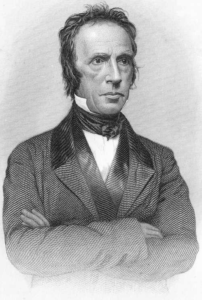Saint John the Baptist by Leonardo da Vinci (1452–1519)
The purpose of John the Baptist’s baptism is something that is rarely discussed. Most commonly it is either downplayed or a cause for debate. But it has huge significance. The purpose of John’s baptism cannot be separated from the purpose of John in general.What was John’s purpose?
When the angel Gabriel appeared to Zechariah (John’s father), he said,
16 And he will turn many of the children of Israel to the Lord their God, 17 and he will go before him in the spirit and power of Elijah, to turn the hearts of the fathers to the children, and the disobedient to the wisdom of the just, to make ready for the Lord a people prepared. (Luke 1:16-17)
When John was finally born, Zechariah prophesied about him, his son:
And you, child, will be called the prophet of the Most High;
for you will go before the Lord to prepare his ways,
77 to give knowledge of salvation to his people
in the forgiveness of their sins,
78 because of the tender mercy of our God,
whereby the sunrise shall visit us from on high
79 to give light to those who sit in darkness and in the shadow of death,
to guide our feet into the way of peace.” (Luke 1:76-79)
In a nutshell, John’s purpose was to prepare the people of Israel for Jesus by calling them to repentance and giving them knowledge of salvation in the forgiveness of their sins.
And this is exactly what John did. But how did he “prepare his ways”? What was his message to Israel?
he went into all the region around the Jordan, proclaiming a baptism of repentance for the forgiveness of sins. (Luke 3:3)
John preached repentance and baptism. He called all Israel to repent and be baptized. For in repentance and baptism John was giving the knowledge of salvation in the forgiveness of sins.
John’s baptism was “for the forgiveness of sins” (see also Mark 1:4). The people understood this clearly and did not question his message:
5 Then Jerusalem and all Judea and all the region about the Jordan were going out to him, 6 and they were baptized by him in the river Jordan, confessing their sins. (Matt 3:5)
That John’s baptism of repentance was “for the forgiveness of sins” means that if the people wanted God to forgive their sins, then forgiveness happened in the water of John’s baptism. This is plainly stated in Luke 3:3 and Mark 1:4. And it is further proved by what John says to the religious hypocrites:
7 But when he saw many of the Pharisees and Sadducees coming to his baptism, he said to them, “You brood of vipers! Who warned you to flee from the wrath to come? (Matt 3:5-7)
The wrath of God is on all those who do not have the forgiveness of sins. The Pharisees and Sadducees wanted what John was offering. Why? Because they understood that a prophet of God was telling them that if they want their sins forgiven, they need to submit to John’s baptism of repentance for the forgiveness of sins. They wanted their sins forgiven, and they sought it in the water. In fact, they didn’t even think they needed to repent. They just wanted to be baptized to claim God’s forgiveness. And John turned them away because their hearts were not repentant.
As John’s job was ultimately to prepare the way for Jesus, he points to Jesus when questioned, and says,
“I baptize you with water, but he who is mightier than I is coming, the strap of whose sandals I am not worthy to untie. He will baptize you with the Holy Spirit and fire.” (Luke 3:16)
John’s message included a baptism of repentance for the forgiveness of sins, but stopped there and did not include the Holy Spirit. Jesus would introduce the Holy Spirit as a part of salvation after his death and resurrection.
There are many different teachings in Christianity today on the purpose of Christian baptism. Some say it is for the forgiveness of sins, some say it is not. But now that we have clearly seen what John taught, looking at what Peter said in Acts 2:37-38 looks awfully familiar:
37 Now when they heard this they were cut to the heart, and said to Peter and the rest of the apostles, “Brothers, what shall we do?” 38 And Peter said to them, “Repent and be baptized every one of you in the name of Jesus Christ for the forgiveness of your sins, and you will receive the gift of the Holy Spirit.” (Acts 2:37-38)
It should not be lost on us that the same author, Luke, wrote both the Gospel of Luke and Acts, where the exact same language is being used to describe the exact same concept—repentance and baptism for the forgiveness of sins.
This is quite astounding.
The concept John taught of repentance and baptism for the forgiveness of sins did not change from beginning with John, through Jesus’ earthly ministry, to after his death and resurrection, and finally to Peter at Pentecost when Jesus poured out the Holy Spirit. Repentance and baptism were specifically taught to be for the forgiveness of sins. However, a change happens in the doctrine when Peter teaches it for the first time at Pentecost in Acts 2—baptism is now to be done with faith in Jesus, and done in his name, and it prepares the way for receiving the gift of the Holy Spirit. This should not be surprising, as John said as much:
33 “I myself did not know him, but he who sent me to baptize with water said to me, ‘He on whom you see the Spirit descend and remain, this is he who baptizes with the Holy Spirit.’” (John 1:33)
For anyone who is confused about or denies that Christian baptism is for the forgiveness of sins, he or she can find certitude that it was what John taught from the beginning. And if there is a denial of the New Testament’s teaching on baptism, then that person must also refute the purpose of John’s baptism for the forgiveness of sins, which in an unbiased examination is not possible.
It is surprising to think that John’s baptism was for the forgiveness of sins when Jesus hadn’t died yet and forgiveness through him was not yet available. This is correct, though. John’s baptism was not salvation through Jesus; it was Old Testament salvation conditioned on repentance and baptism, as a forerunner to Jesus’ ministry, the kingdom of God at hand, and the salvation Jesus would secure and offer. John’s baptism was authorized from heaven (Matt 21:25-26), purposed by God (Luke 7:29-30), commanded by God (John 1:33), and effectual only for the briefest time from his appearance in the wilderness through Pentecost (Acts 2). This is why John’s baptism no longer exists today (see Acts 19:1-7).
John came to prepare the way for Jesus by calling all Israel to repentance and baptism for the forgiveness of sins.
“Behold, I send my messenger before your face,
who will prepare your way,
3 the voice of one crying in the wilderness:
‘Prepare the way of the Lord,
make his paths straight,’” (Mark 1:2-3)



